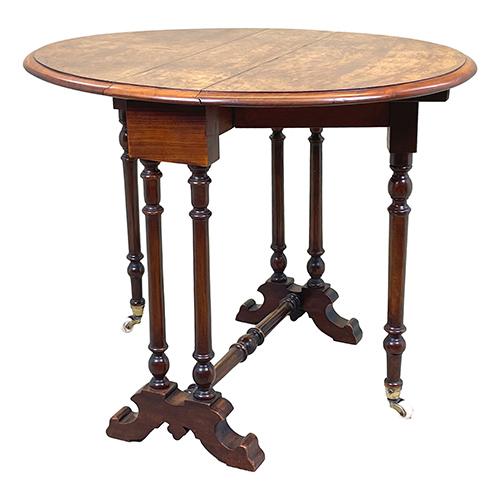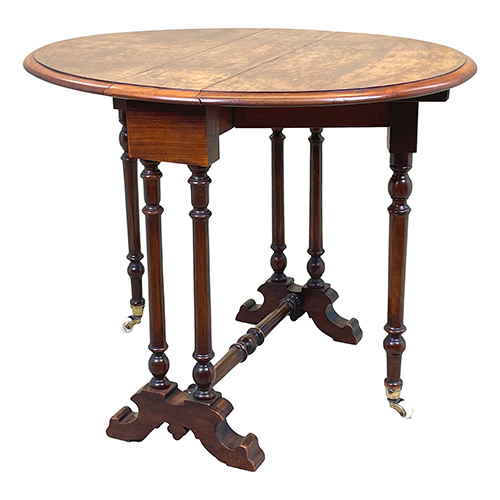

Sutherland Table
One of the most intelligent and practical innovations in Victorian furnishing, the traditional Sutherland table is of gatefold leg design with twin drop down leaves, offering ingeniously narrow dimensions for convenient storage.
It is said that the table is named after the influential Victoria socialite Harriet Sutherland-Leveson-Gower, Duchess of Sutherland (1806-1868). A close friend of Queen Victoria, Duchess Sutherland served as Victoria’s Mistress of the Robes, a role which oversees the day to day running of the Royal household, on four separate terms between 1837 and 1861.
A philanthropist and staunch campaigner for the abolition of the US slave trade, the Duchess’ home of Stafford House on The Mall (now known as Lancaster House) is next to Clarence House and St James’s Palace and was very much at the heart of fashionable London society.
A remarkably sturdy and robust concept, the Sutherland table was originally designed as a serving table intended to hold an entire tea service. The earliest examples feature rounded fold down flaps with solid pedestal legs, united by a turned cross stretcher for added strength.
 Another clever feature of the table’s gatefold legs is that they are usually finished at each end with brass castors. This allow the table to be lifted into position or transferred within a room, with the leaves fully extended, without the risk of the legs catching on a rug or carpet.
Another clever feature of the table’s gatefold legs is that they are usually finished at each end with brass castors. This allow the table to be lifted into position or transferred within a room, with the leaves fully extended, without the risk of the legs catching on a rug or carpet.
Usually fashioned in hard woods such as oak, mahogany or walnut, Sutherland tables are immensely versatile and can be used for dining or as a card table. But it is their intelligent compact fold-away design that ensures these beautiful items of furniture remain as popular today as they were nearly two centuries ago.
Click here to view a selection of Sutherland tables currently available from BADA members.

